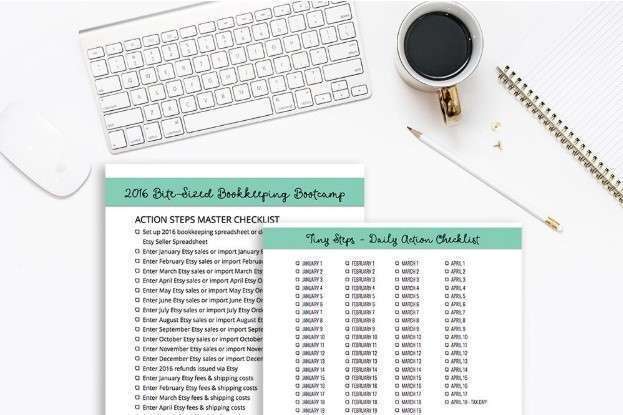
Essentially, the seller ensures the goods arrive intact and undamaged, bearing all risks during transit. Indicating “FOB port” means that the seller pays for transportation of the goods to the port of shipment, plus loading costs. The buyer pays the cost of marine freight transport, insurance, unloading, and transportation from the arrival port to the final destination.

FOB shipping point always benefits the seller
The seller will most likely require at least a mate’s receipt or some other form of evidence of export (such as a copy of the bill of lading) for their VAT/GST purposes. Each of these can be combined with FOB Origin or FOB Destination, forming terms such as “FOB Origin, Freight Collect” or “FOB Destination, Freight Collect”. Knowledge is powerful, and having a great business relationship with your vendors can overcome multiple barriers. The personal relationship will provide flexibility for difficult situations.
- Effective negotiation involves clearly defining the shipping point, agreeing on carriers, and setting delivery timelines.
- Retailers leverage F.O.B. shipping point to enhance inventory management and respond quickly to market demands.
- There are 11 internationally recognized Incoterms that cover buyer and seller responsibilities during exports.
- By refusing these shipments, the distributor was returning something that it actually owned.
- While there are pros and cons to all of these choices, it’s crucial to remember that the goods being imported and exported will determine which transportation method is best.
- Where the FOB terms of sale are indicated as “FOB Origin,” the buyer is responsible for the costs involved in transporting the goods from the seller’s warehouse to the final destination.
Freight on Board (FOB)
Also, under FOB destination conditions, the seller is liable for the merchandise’s transportation costs. Shipping under FOB terms, the buyer is responsible for all costs and risks once the goods are loaded onto the shipping vessel, but will not cover the cost of International seafreight. At this point, the legal title, the rights that come with that title, and risk of loss passes from seller to buyer. The buyer pays for transportation costs but deducts the price from the final invoice. The seller is liable for the goods during transport until they reach the port of destination and must cover damage or loss if they occur. In this version of the FOB Incoterm, the seller arranges the transport, and the buyer pays for the transportation costs when they receive the goods.
Insurance Complications
Each situation differs depending on place, parties, industry, applicable laws and relevant customs QuickBooks and usages. A late shipment, a breakdown, a Bill of Lading filled out improperly – no matter what it is—a circumstance can arise to challenge the best working dynamic in logistics. Fortunately for this distributor the vendor had agreed to accept the goods back into inventory, even though they had no legal obligation. Receive news and insights that help you navigate supply chains, understand industry trends, and shape your logistics strategy. Understanding the differences between each is as simple as knowing how much responsibility the buyer and supplier assume under each agreement. If anything happens to the goods on any leg of the journey to the buyer, the supplier assumes all responsibility.
Need a shipping quote?
- Once the cargo leaves the seller’s warehouse, the buyer is in possession of the load, and can better control the successful outcome of their shipment.
- CIF means “cost, insurance, and freight.” Under this rule, the seller agrees to pay for delivery of goods to the destination port, as well as minimum insurance coverage.
- First developed in 1936, the terms are used by 45 million companies in more than 170 countries.
- For instance, let’s say that a minor inherits $50,000 from a relative’s estate.
- You can ensure an effective budget so that the costs of shipping will not arise unexpectedly.
The seller is responsible for paying the freight cost when the terms are FOB Destination. Given that it offers many benefits to both exporters and importers, it can be fob shipping point an attractive choice for companies that want to minimize risks and streamline operations. However, it’s important to consider your unique needs when deciding if FOB shipping is the right choice for your business.
Disadvantages of FOB as a Buyer
- It is much easier to determine when title transfers by referring to the agreed upon terms and conditions of the transaction; typically, title passes with risk of loss.
- Freight on Board (FOB), also referred to as Free on Board, is an international commercial law term published by the International Chamber of Commerce (ICC).
- A late shipment, a breakdown, a Bill of Lading filled out improperly – no matter what it is—a circumstance can arise to challenge the best working dynamic in logistics.
- With CIF, the seller is responsible for the goods during transit, providing more protection for the buyer.
- The buyer assumes all risks and benefits of ownership as of the moment the shipment arrives at the shipping dock.
- Or, the responsibility can transfer to the buyer once he or she receives the goods if there is a FOB Destination agreement in place.
Although FOB shipping point and FOB destination are among the most common terms, other agreements vary from these two. In this case, the seller completes the sale in its records once the goods arrive at the receiving dock. The accounting entries are often performed earlier for a FOB shipping point transaction than a FOB destination transaction. For example, assume Company XYZ in the U.S. buys computers from a supplier in China and signs a FOB destination agreement. If an accident prevents the computers from being delivered, the supplier takes full responsibility for the computers and must reimburse Company XYZ or reship the computers. Failure to properly manage and assess risk regarding purchase and transportation terms can affect any company’s bottom line.
While the exact nature of the contractual arrangements between buyers and sellers is as varied as there are buyers and sellers, the basic document is typically a purchase order or a sales order. For domestic sales, this will almost always include a F.O.B. (Free on Board) term of sale derived from the Uniform Commercial Code (UCC). The most important Accounting Security reason you should understand FOB terms is that they set out who is responsible for certain costs and who must take action if the products are harmed or lost during the shipping process.
How is “FOB” used in shipping documents?
- They can also more easily track their packages and handle their own disputes with customs or freight carriers.
- So, what responsibilities would a seller have today with respect to the shipping arrangements when the term of sale is F.O.B. Origin?
- Both parties must fulfill their obligations, mitigate risks, and maintain a positive and trustworthy business relationship to ensure clarity, transparency, and legal compliance in FOB agreements.
- FOB gives buyers more control and potential cost savings because it allows them to manage the shipping and insurance themselves.
- “Freight collect,” when it appears on your shipping documentation, signifies the buyer (the consignee) is responsible for paying for the cargo’s transportation costs from origin to destination.
- When it is indicated as “FOB Origin,” it means that the transfer occurs at the seller’s shipping dock when the goods are safely on board the ship.
Of the 11 different incoterms that are currently used in international freight, Free on Board (FOB) is the one that you will encounter most frequently. What is FOB shipping, how does it differ from other incoterms, and when should you use it? But it’s good practice for either the buyer or seller to obtain China freight insurance.

Commercial Invoice
Conversely, with FOB destination, the title of ownership transfers to the buyer once the goods reach the buyer’s loading dock, post office box, or office building. This means the seller retains ownership and responsibility for the goods during the shipping process until they’re delivered to the buyer’s specified location. When you think about legal liability, you need to know your FOB terms with vendors. This meant that even though the vendor was paying the freight transportation cost, the distributor owned the freight from the time the shipment was tendered to the carrier. By refusing these shipments, the distributor was returning something that it actually owned. FOB Incoterms are also the most cost-effective option, as it allows the buyer to shop for the best possible shipping rate.


